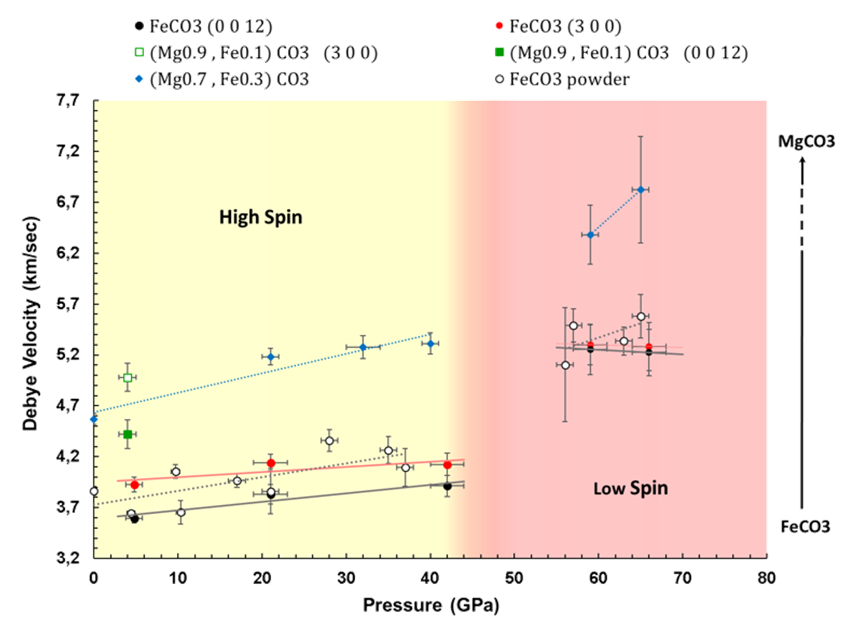Elastic properties of carbonates at high pressures and temperatures
Carbonate inclusions in diamonds, carbonate melt-pockets in xenoliths, and carbonatite lavas are only a few of the many examples that nature uses to convince us that deep cycling of carbon takes place and that carbonates are very important players. Questions then arise as to how much carbon is stored in the deep Earth, in what solid or fluid form does it exist, what is its source, and most important, given the present scientific technology, can we quantify it? Since samples originating below lower mantle depths are extremely rare, seismology might provide the answers to these questions.
However, scientists must first provide the basic parameters needed in order to be able to quantify seismically the amount of carbonates in the mantle. The goal of project 6 is to investigate the elastic properties of Fe-bearing carbonates at extreme conditions, aiming to reveal their seismic signature. Debye sound velocities are derived from Nuclear Inelastic Scattering (NIS) experiments in laser-heated diamond anvil cells using synchrotron radiation (ID18, ESRF). So far, our findings suggest strong dependency of the elastic wave velocities on the Fe2+ spin state, the carbonate composition and the crystal orientation (Fig. 1). Further experiments are planned to establish the seismic signature of carbonates, leading us one step closer to their seismic detectability and the determination of the carbon net sink in the deep Earth.
 |
Fig. 1 Debye sound velocities of Fe-bearing carbonates with increasing pressure. Velocities increase by nearly 25% above 50 GPa after spin Fe2+ spin transition is complete. The strongly anisotropic character of carbonates below 40 GPa disappears once Fe2+ is in the low spin state. Note, that the incorporation of Fe in the carbonate minerals will decrease the elastic wave velocities.






